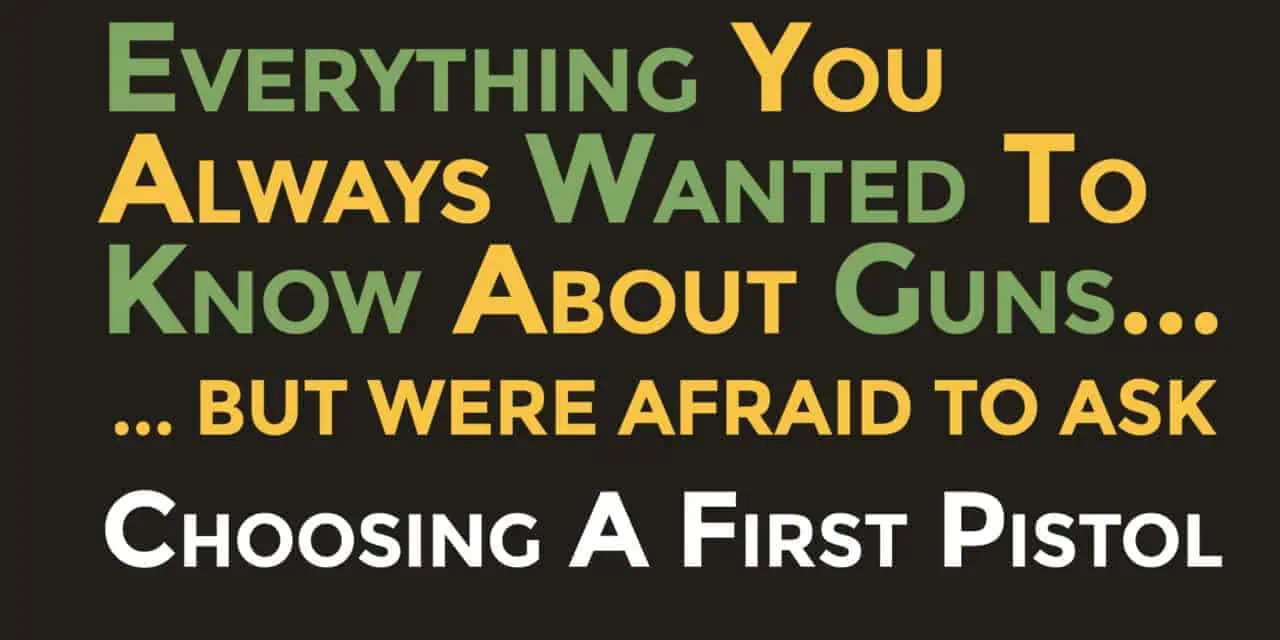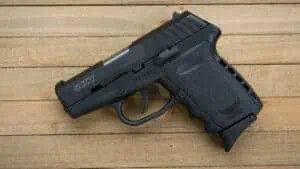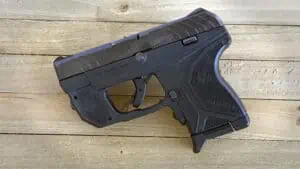Sorting Out The Best Pistol To Buy First
Pistols have been around for hundreds of years. They started out as slightly more portable versions of full-sized firearms such as the musket, but grew into their own in the mid-1800’s with the invention of the modern self-contained cartridge and the repeating revolver. The handgun continued to evolve, with the iconic six-shooter of the Old West giving way to the classic 1911 semi-automatic and then finally to today’s lightweight defensive pistols. No matter what size or shape or what ammunition it fires, the handgun was also looked upon as an easy to carry firearm that was ready to go at a moment’s notice. This makes the pistol the #1 choice for a defensive handgun, and finding the best of the lot, the best pistol to buy, does take a little research.
The unique ability of a handgun to be constantly near us, and that is what is continuing to drive updates in its design and functionality. In the middle of the 20th century, you mention “defensive handgun” and chances are the first thing that would pop into mind would be a .38 revolver of some kind. Later on, Col. Jeff Cooper would increase the popularity of the semi-automatic 1911 pistol and the .45 ACP cartridge as a defensive pistol option. The 1980’s saw the rise of the “wonder nine” semi-auto and the huge growth in the 9mm round. Finally, in the early 2000’s, Ruger created a market for an entirely new type of gun, the ultra-compact .380 ACP pistol.
The Reality of Today’s Pistol Market
These are the trends in firearms that have shaped today’s market for handguns in the United States. They have led to larger .380 ACP pistols that are very easy to shoot, along with similar-sized 9mm pistols that trade soft recoil for a little more firepower. On top of this, there are dozens of different pistol makers out there today, making it even harder to choose a handgun for a new gun owner. What we’re going to do, then, is try to talk about the best pistol to buy in terms of function and form, rather than models and brand names (although we’ll drop in a few of those as well.
First off, let’s make one thing clear. There is no such thing as a “man-stopping” pistol. The muzzle energy (the amount of force that goes downrange) for a typical 9mm bullet is about 375 ft/bs. This pales in comparison to the 1300 ft/lbs put out by a bullet fired from an AR-15. Even the great and powerful .45 ACP cartridge kicks out around 400 ft/lbs, far short of what a rifle can do. So when it comes to stopping a fight with one shot, pistols are pistols, and rifles are rifles.
No Such Thing As “Pistol Stopping Power”
This is going to affect our choice of handgun. Because the words “stopping power” and “handgun” don’t really go together, it will probably take more than one shot to end a threat to our lives. This in turn means that ammunition capacity plays an important role in choosing a handgun. A round of 9mm ammunition is smaller in diameter than a round of .45 ACP, which means you can carry more of them inside your gun. It also means that we’re going to favor the higher capacity of a semi-automatic pistol over the lower capacity revolver. There is nothing wrong with either the .45 ACP round or a revolver. I own both and I shoot both. It’s just that when we look at the options for the best pistol to buy, those two flaws mean we probably need to look somewhere else.
When it comes to recommending a first pistol to buy, I end up recommending a compact, striker-fired 9mm pistol in the $500-600 MSRP range. Why those guns in particular?
- They’re a good compromise between size, accuracy and firepower
- A striker-fired action means you usually don’t have to fiddle with an external safety when your life is on the line
- They hold anywhere from 10 to 15 rounds of 9mm ammo, enough to deal with most common assaults
- They’re big enough to shoot without being painful on the hands, which means you’ll practice with them more often
- A $500 minimum MSRP means you’re buying a gun with a little more attention to detail than other guns. You’re buying a gun to save your life. You wouldn’t shop around for the cheapest parachute, why shop around for the cheapest gun?
A few more words about some of those points. Some people blanch at the idea of a semi-automatic without a thumb-operated safety. However, the trigger safety on most striker-fired guns serves that exact same purpose. If you’re cautious about a striker-fired gun, don’t be. Police forces around the world carry guns with that type of action, and they’ll work just fine for you as well.
Some Suggestions For Best Pistol To Buy First
Sorting out the best pistol to buy for you from these criteria is a personal thing. There are a number of guns to choose from within the parameters I just laid out, here are but a few.
- The Glock 19. My current carry gun. The Glock 19 has been around (in one form or another) for decades now, and has an almost inexhaustible amount of accessories and gear that work with it.
- A Sig Sauer P320 Compact. The P320 is modular, which means you can easily adjust the grip size and color as well as swap out the barrel and slide, all without sending your gun off to a gunsmith.
- The Beretta APX Compact. Beretta is the world’s oldest gunmaker, and the APX line continues their tradition of making top-quality pistols.
- The Smith & Wesson M&P 9c. The M&P line has also been around for decades, so there is a staggering array of accessories available for this gun.
There are, however, other criteria for choosing the best congun for your unique needs. Sometimes, despite our best efforts, we want to protect ourselves, but just can’t afford a $500 gun. There are still good defensive pistol options out there at a lower price point. The Ruger Security 9 Compact and Sccy CPX-2 are good choices in this price range, and I’d also take a good, long look at the Taurus G3C.
Pistols Are A Compromise
We also make compromises in how we carry. When I worked in an office, I had to find a way to combine business casual with concealed carry. My solution was to carry a Ruger LCP in a pocket holster. 6+1 rounds of .380 ACP might not be the most effective combination of capacity and ammunition, but it’s better than using harsh language. If you’re in the same situation, then your best first pistol might just be an LCP or a similar gun like the Kel-Tec P3AT or Glock 42.
Mention pocket guns, and you’ll have people suggest that a small, snub-nosed revolver in 38 Special is the best pistol to buy at first. There’s nothing wrong with that sort of gun. They are simple to use, work reliably and are a good choice for covert carry. However, they are not the best choice for a first concealed carry pistol. The trigger on most small revolvers takes a lot of effort to use, and that can (and does) throw your sights off-target. The small size of these kinds of guns makes them easy to carry, but it also means they have less mass to soak up recoil makes them hard to hold onto while shooting. These two things, combined with the long trigger pull, make me suggest that some other option would be the best pistol to buy at the start for most new gun owners.
The Best Pistol To Buy Is One You’ll Use For Practice
Whatever gun you choose, please understand that you are buying an object that requires skill to use properly. A handgun is not a talisman of self-protection or the ballistic equivalent of a lucky rabbit’s foot. Guns shoot only as well as you shoot, so make sure that practice and range time are part of your regular routine. Most of all, understand that the best pistol to buy is a handgun that’s near you when you need it the most. As the saying goes, fortune favors the well-prepared, and if you want luck on your side when your life is at stake, you’ll need to earn it.





